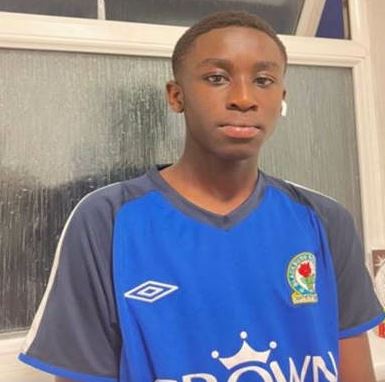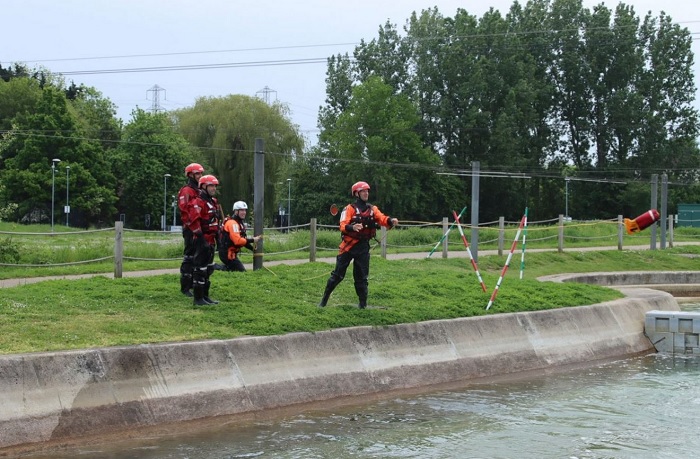On World Drowning Prevention Day (25 July), the family of a teenager who tragically drowned last year, has joined London Fire Brigade in calling for councils and parents not to wait before it’s too late to prevent drownings this summer. Councils are being urged to ensure water safety measures are put in place and carers are being encouraged to talk to children about the risks of jumping into open water.
On 18 July 2022, 14-year-old Brian Sasu went with friends to a popular swimming spot at Tagg’s Island in Richmond after schools closed early on one of the hottest days of the year. After jumping from the bridge into the water below Brian went missing and an extensive search and rescue operation began. Sadly, Brian drowned, and his body was found the next day.

West London Coroner’s Court heard there were no clear warning signs or safety equipment in the area where Brian jumped in. Richmond Council have been working closely with the Brigade and the Royal National Lifeboat Institution to ensure Richmond's waterways are as safe as possible and have installed 16 throwline boards, including one in Brian's memory, along with clearer warning signs.
Brian’s family and the Brigade are now urging other councils not to wait for another tragedy and have written to all local authorities in London to encourage them to take action and carry out risk assessments to ensure waterways in their boroughs have appropriate water safety measures in place.
Please tell them not to jump in
Brian’s parents are also pleading with other carers to talk to their children about the dangers of jumping into open water. His father, George, said: “Brian was a lovely teenage boy, an aspiring footballer, but now we’ll never know if that could have ever happened.
“Last year, Brian and I left the house going to school as usual. On the way we were talking about how Brian said he was going to pick up his little brother. Around 12:30pm, I rang him because his school finished early, and he told me he was going to go out with his mates. I told him I would get his brother, so he just needed to go back home.
“I called his phone, but he wasn’t answering and before I knew it, the police were knocking on my door telling me that my son had gone into the river.
“I want to tell parents to talk to their children about the dangers of open waters so that what happened to Brian won’t happen to their own children. If they’re spending time near the riverside with the warmer weather, please tell them not to jump in because it’s so dangerous.”
Across the UK, inland waters, such as rivers, canals and lakes continue to be the leading locations for accidental drownings, with 60 per cent of deaths. Last year, the Brigade attended twice as many incidents where a person sadly drowned than the previous year.
Out of this tragedy we hope the lessons learned will prevent this happening again
Assistant Commissioner for Prevention and Protection, Charlie Pugsley, said: “What happened to Brian was a complete tragedy, but out of this tragedy we hope the lessons learned will prevent anything like this happening again.
“We have seen a number of throwline boards installed by order of the coroner after someone has sadly drowned. We want to see this happen before a life is lost, so we’re asking local authorities and landowners to act now before it’s too late.
“We’re also asking parents and carers to remind their children not to jump into water this summer. Not only could there be hidden obstacles under the surface, but the water can be incredibly cold even on a hot day. Many drownings every year are caused by cold water shock, which causes panic, gasping for breath taking in water, disorientation, and loss of muscular control.
“It’s also really important to know what you can do if you fall into water accidentally or get into difficulty. Our advice is ‘Float To Live’ - roll onto your back and float until your breathing is under control. This allows oxygen to flow to your muscles helping to prevent cramping of your arms and legs. You can then swim to safety or call for help”.
We're urging Londoner's to follow the LFB's water safety advice
Deputy Mayor for Fire and Resilience, Fiona Twycross said: “Our thoughts are with Brian’s family and friends following his tragic death and we are so grateful to them for telling their story and helping to prevent future tragedies.
“Open water swimming in the Thames, London’s canals and our waterways can be extremely dangerous. That’s why the Mayor and I are continuing to urge Londoners to follow the London Fire Brigade’s water safety advice and we are supporting the Brigade with the resources and equipment it needs as part of the Mayor’s ongoing work to build a safer and better London for everyone.”
To mark World Drowning Prevention Day, the Brigade is holding a water safety event at Teddington Lock, encouraging members of the public to learn how to use public rescue equipment and giving out important water safety advice alongside partners including the Royal National Lifeboat Institution, Richmond Council and the Metropolitan Police Service.

Richmond Council, in partnership with the Teddington RNLI Lifeboat Station and London Fire Brigade Richmond, has released a new film to raise awareness around water safety for young people. You can watch this on their YouTube channel.
More information on how to stay safe when spending time around water can be found on the Brigade’s website.